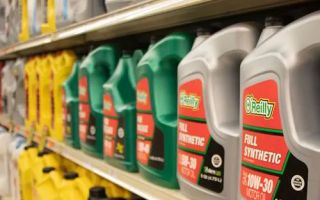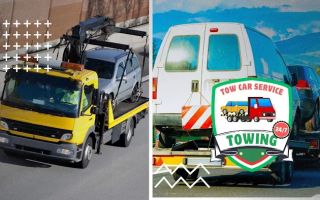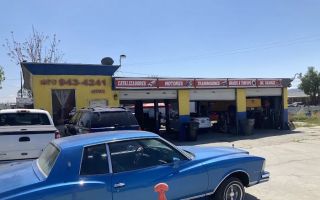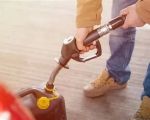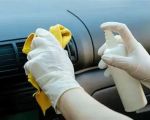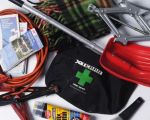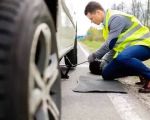How to Deal with Tire Blowouts in the Middle of the Highway
Experiencing a tire blowout on the highway can be a daunting situation for any driver. It's a moment of panic that many drivers fear, but knowing how to handle a tire blowout can make a world of difference in ensuring your safety and preventing further damage. In this article, we’ll explore effective strategies for dealing with tire blowouts, and how to stay calm and take the necessary steps to protect yourself and your passengers.
- 1. Understanding Tire Blowouts
- 2. Step-by-Step Actions to Take During a Blowout
- 3. Key Safety Tips to Follow
- 4. Preventing Tire Blowouts
- 5. When to Call for Professional Help
- 6. Conclusion and Final Tips
1. Understanding Tire Blowouts
A tire blowout occurs when a tire loses air pressure suddenly and dramatically, often resulting in a loud noise. While blowouts can happen for several reasons, including poor tire maintenance, hitting debris, or over-inflation, the most important factor is how you react once it happens. Understanding the mechanics behind a tire blowout can help you stay calm and take the right actions.
The key factor in a tire blowout is the rapid loss of air, which causes the tire to collapse. This leads to an uncontrollable, immediate change in the vehicle's handling. It’s critical to understand that when a blowout happens, you should not panic, as making quick, sudden movements can make the situation worse.

MR. TIRE INC.
2078 New York Ave, Huntington Station, NY 11746, USA
2. Step-by-Step Actions to Take During a Blowout
When you experience a tire blowout, the first and most important step is to remain calm. Here's a step-by-step guide to safely handling a tire blowout:
- Maintain control of the vehicle: Keep a firm grip on the steering wheel and try to steer straight. Avoid slamming on the brakes, as this can make the situation worse.
- Gradually slow down: Take your foot off the accelerator slowly to allow the vehicle to decelerate. This helps prevent any sudden movements and gives you more control over the vehicle.
- Signal and move to the side: Turn on your hazard lights and, when it is safe to do so, move to the shoulder of the road or a safe spot away from traffic.
- Come to a complete stop: Once safely off the road, put the car in park and apply the emergency brake. Ensure the car is completely stationary before exiting the vehicle.
3. Key Safety Tips to Follow
After a tire blowout, safety should be your primary concern. Here are a few critical tips to ensure you stay safe:
- Stay in the car: If you're on a busy highway or in heavy traffic, stay inside the vehicle with your seatbelt on. This reduces your exposure to potential dangers from passing vehicles.
- Use reflective triangles: If you have reflective warning triangles, place them behind your vehicle to alert other drivers to your presence.
- Don’t attempt to change the tire on a busy road: If possible, wait for a tow truck or roadside assistance to handle the tire change safely.
4. Preventing Tire Blowouts
While some blowouts are unavoidable, regular tire maintenance can significantly reduce the chances of a blowout. Here’s what you can do to keep your tires in good shape:
- Check tire pressure regularly: Under-inflated or over-inflated tires are more likely to fail. Use a tire pressure gauge to ensure that your tires are inflated according to the manufacturer’s recommendations.
- Inspect tires for damage: Look for visible cracks, bulges, or embedded debris. If you find any of these signs, get your tire checked by a professional.
- Rotate tires: Regularly rotating your tires helps ensure even wear, which can extend their lifespan and prevent blowouts.
5. When to Call for Professional Help
It’s important to know when to seek professional help, especially when you're not able to safely change the tire yourself. Here’s when you should call for assistance:
- If you're unable to move the vehicle to a safe location.
- If you don’t have the necessary tools or knowledge to change the tire.
- If you're on a busy highway and need immediate assistance.
In these cases, calling a professional roadside assistance service can provide peace of mind and prevent further risks.

MR. TIRE INC.
2078 New York Ave, Huntington Station, NY 11746, USA
6. Conclusion and Final Tips
Dealing with a tire blowout can be a stressful experience, but knowing how to handle it calmly and efficiently is crucial. The most important takeaway is to stay calm, slow down gradually, and make sure you're in a safe location before attempting any actions.
Remember that prevention is key. Regular tire maintenance, including checking tire pressure and inspecting for damage, can go a long way in reducing the likelihood of a blowout. And when in doubt, don't hesitate to reach out for professional help. If you're in need of expert roadside assistance, feel free to contact Rescue & Towing for reliable and fast service to help you get back on the road safely.

